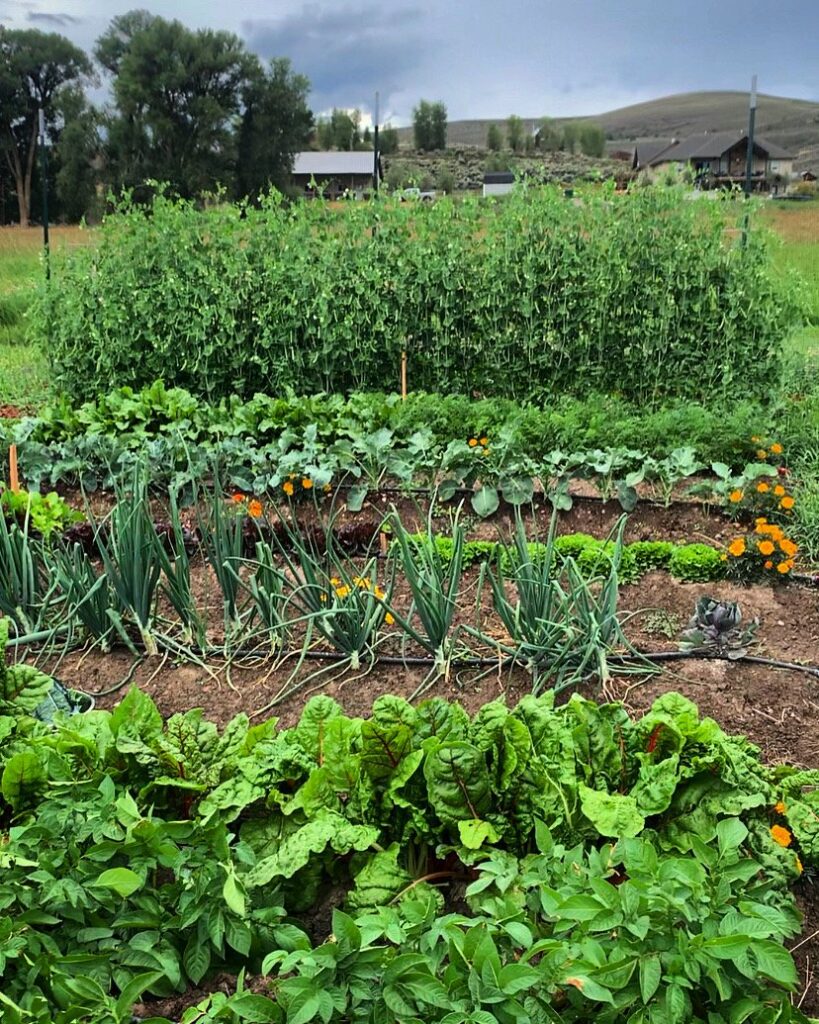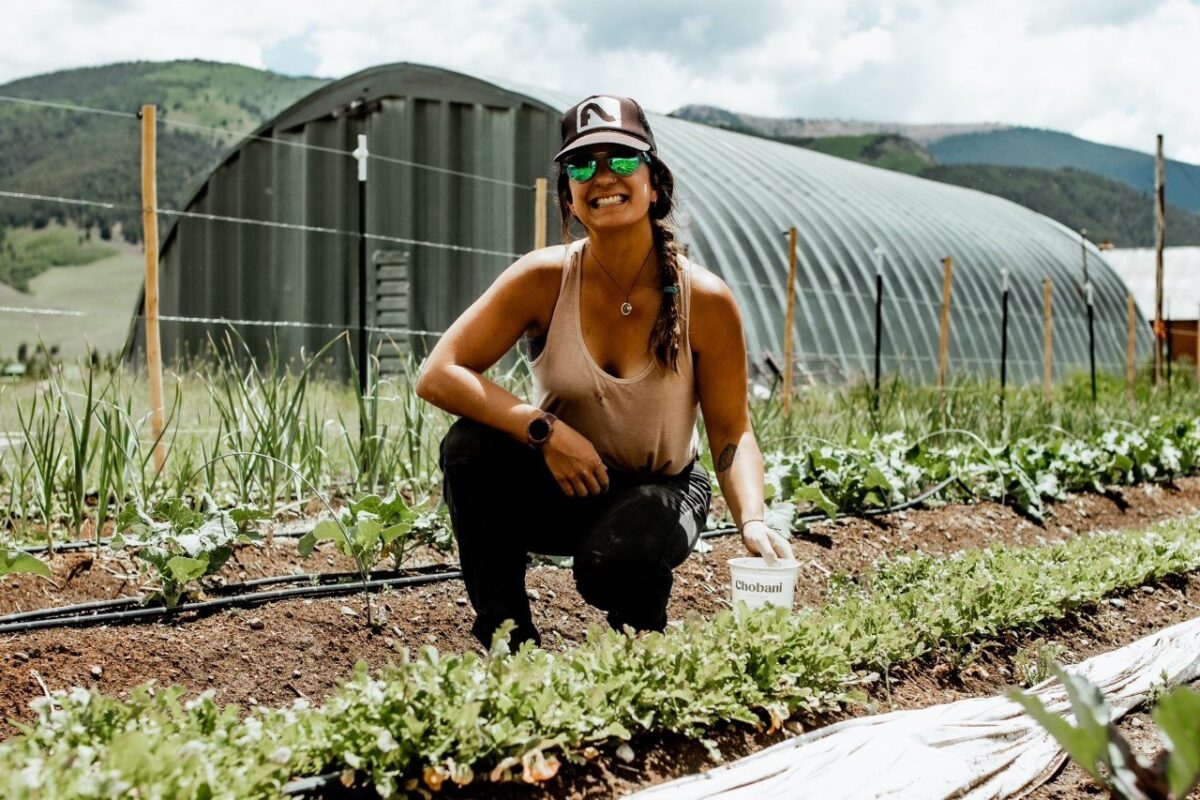This story is part three of an ongoing series highlighting Clark Family School of Environment and Sustainability (ENVS) projects and their relations to the broader environmental movement and to the Gunnison Valley community.
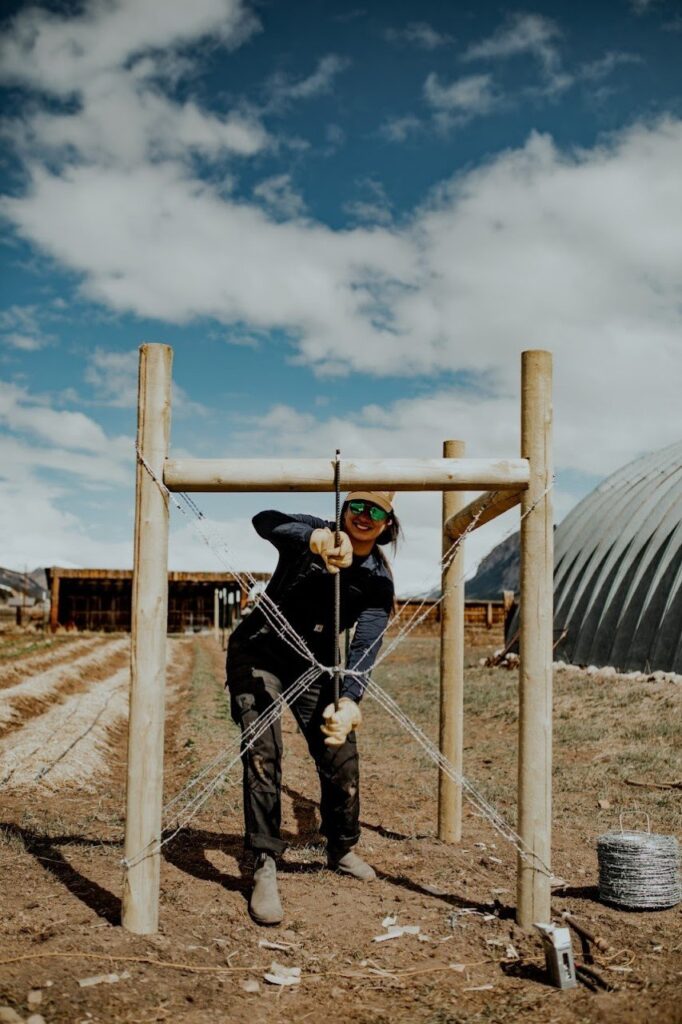
Kara Williard is a second year Master’s of Environmental Management (MEM) student whose interest in agriculture and foodsheds traces back to her experiences on her family’s historic ranching operation in New Mexico. In her undergrad, Williard attended the University of New Mexico, where she studied Sustainability Community Development and curated her liberal arts education around topics relating to sustainable agriculture, cobbling together courses in American studies, Chicano studies, geography, and other course offerings. Her capstone project was creating a plan for her aunt’s 350-acre cattle and sheep ranch.
Williard’s family has raised sheep for 15 generations in a remote, traditional ranching town in northern New Mexico. Williard’s aunt, while deeply passionate about ranching, was struggling to maintain the ranch’s financial viability, even with multiple income streams from selling wool and meat.
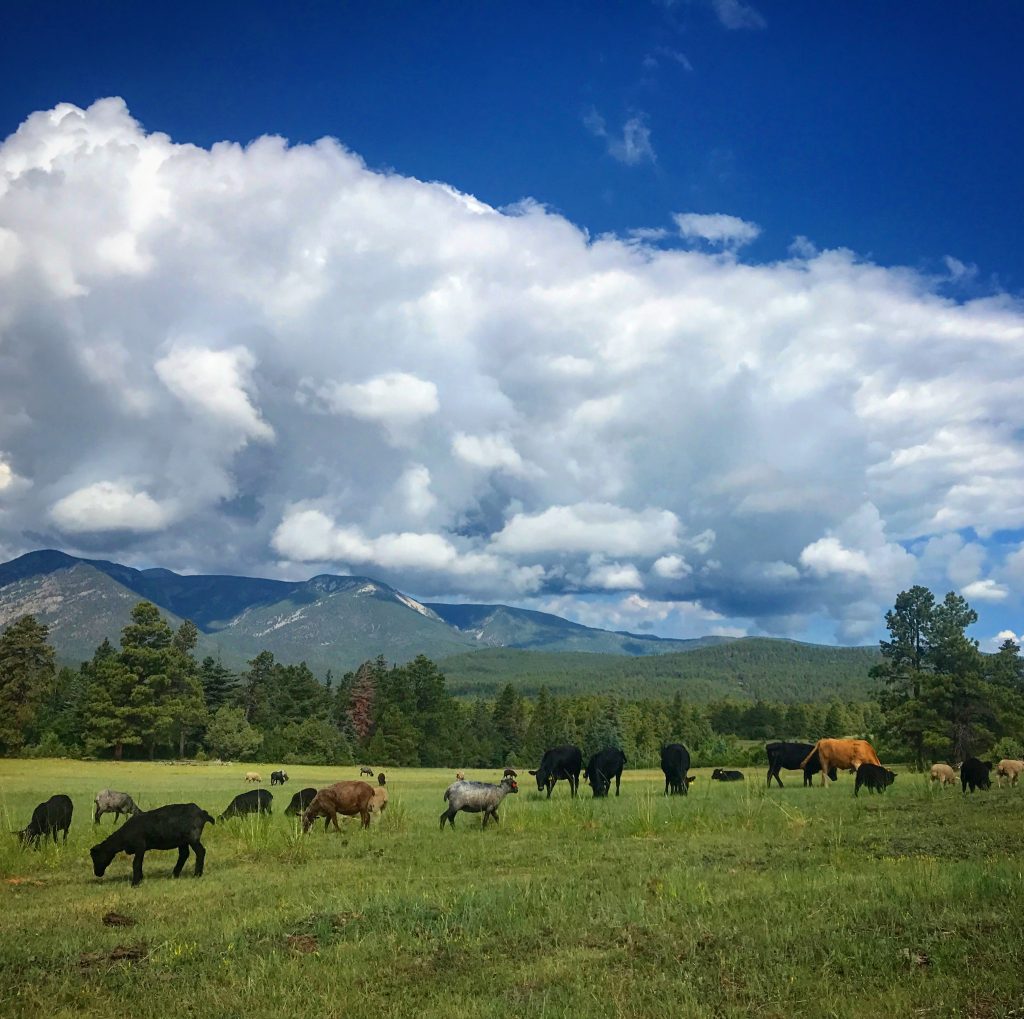
And so Williard set out to further diversify her aunt’s ranching business, laying out the plans for an agritourism venture that included lodging, a variety of workshops, and other educational offerings. Williard stuck around for two years implementing the master plan, incorporating regenerative practices like rotational grazing that revitalized the land into the ranch’s daily operations.
“After a few years of witnessing that project come to fruition, it was really awesome to see not only the economic benefits, but [also the] land health benefits in addition to sharing what we were doing and sharing that space with community members and also people that were coming to visit from elsewhere…I feel like ranching and farming can be pretty isolating, but that really helped take away that isolation factor,” says Williard.
The ranch continues to prosper and grow in alignment with Williard’s vision, which was deeply rewarding for her. “I was pretty affixed to the idea that I had to be there for it to continue, but thankfully I let go of that ego part of me and just left and it continued on, and it’s doing really well,” she says.
Williard says that her initial interest and entry into the agriculture sphere was largely fused with her environmental concerns. In the beginning, she was predominantly focused on greening agriculture, shifting towards improving soil health and revitalizing landscapes via regenerative practices that improve the land, not merely extract from it.
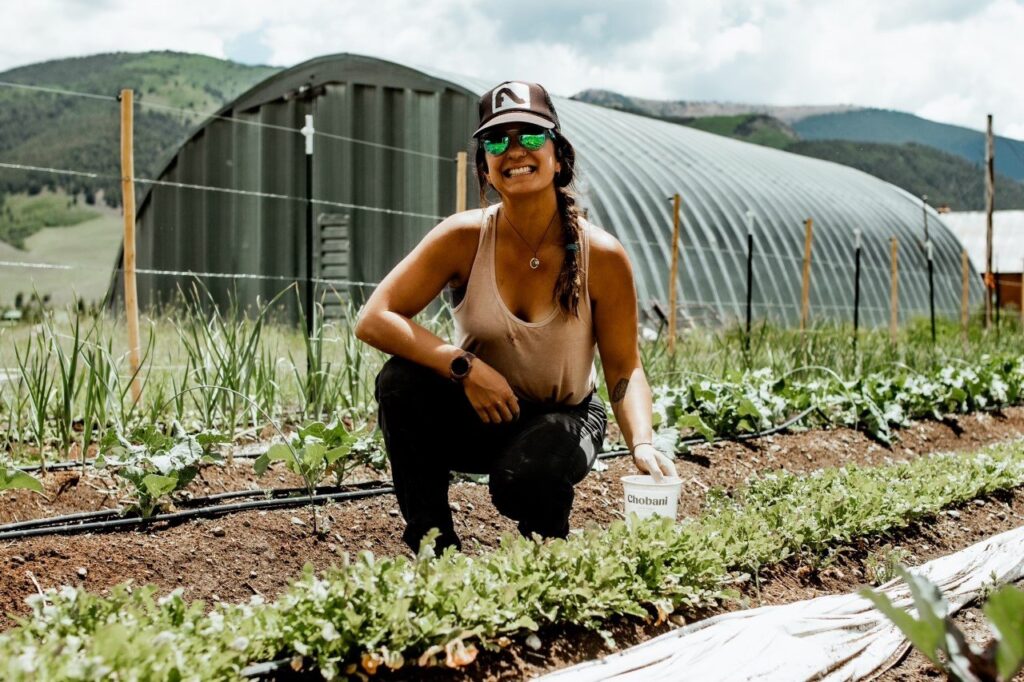
Now more than 10 years into her agriculture career, Williard has a broader sense of what her work is truly worth and is expanding her immediate focus. “First and foremost [now], I think of food production as for the community, and building healthy soil is just a byproduct of that,” says Williard.
The rewards of agricultural work make all the long days and anxious nights that accompany farming worth it. “There’s been days where I am just pushed to my absolute [limit], beyond exhaustion…sometimes it’s sad, you witness a lot of death, [but] you also witness a lot of life. I think there’s been days that have really pushed me beyond what I thought was possible,” adds Williard.
On her aunt’s ranch, which was rather disconnected from the end consumer, it was sometimes difficult for Williard to see the products of her labor, but more recently, with her agricultural work in the Gunnison Valley, she has witnessed the impacts of her hard work via the immediate satisfaction of the food’s recipients. “I think that has widened my vision of what farming can do, beyond just a land health perspective…providing healthy food to a community and [seeing] the resilience that builds into a community space,” says Williard.
Williard notes that many of the farms she has worked on have not been firmly established in their practices, allowing her flexibility to experiment and problem solve on the fly, gaining valuable experience in the unpredictable world of agricultural production. Down in the Yucatan Peninsula of Mexico on a farm she got involved with through the Worldwide Opportunities on Organic Farms (WWOOF) program, she grew iconic crops like coffee, cacao, and tropical fruit that would be impossible to grow in most of the United States.
Williard always knew she wanted to further her education in graduate school. She zoned in on the MEM program, appreciating the project-based nature of the program which would allow her to “sink her teeth” into something she was passionate about. “I feel like it’s hard when you’re in the field of environmental management, and it’s a lot of talking about problems but not really action-based, or [not] being able to put energy and work towards something that you feel is an effective solution,” says Williard. The MEM offered a hands-on alternative to other, more theory-based programs.
Williard pursued funding and structure for her graduate school experience with a variety of opportunities that initially didn’t work out. Holly Conn, the Executive Director of Mountain Roots, reached out to Williard with a specific fellowship project to suit Williard’s background: getting the Glacier Farm, a collaboration between Mountain Roots and the Crested Butte Land Trust, off the ground. “This was at the height of Covid, and we were all just pivoting and adapting, and it was a time for nonprofits to see such excess of need in their communities,” she says.
Glacier Farm sits on the historic Niccoli Homestead, and was deemed an ideal project for the moment, with Covid creating disruptions in grocery stores and food supply and many Gunnisonians looking for localized food options. For Williard, the timing worked well for her MEM experience. “It came about spontaneously and not quite in the way I thought it was going to, but it worked out really well,” she adds.

Williard set out on the Glacier Farm project in August 2020, on what was essentially just a plot of open land up at nearly 9,000 ft. with a few beds, a recent sprinkling of seeds in the ground, and old equipment strewn about. In the farm’s first six weeks at the end of a truncated season, Williard produced 300 lbs. of food, proving the project’s viability.
Having proved the idea could work and the land was fertile, Williard set about planning and preparing for the following season. The Crested Butte Land Trust and Mountain Roots, working in concert, applied and were accepted for a Great Outdoors Colorado (GOCO) grant that served as the green light to be able to build out the initial infrastructure required for the farm’s first full growing season.
The lion’s share of the GOCO grant money from Williard’s first year was allocated to hiring a Farm Corps of five young and passionate budding agricultural workers who received a competitive wage. The Farm Corps was instrumental to making Glacier Farm a viable endeavor. By May of 2021, Williard and her crew were on the property every day building fences, building beds, weeding, prepping the soil, planting seeds, and transplanting the early starts that had been growing in greenhouses since March.
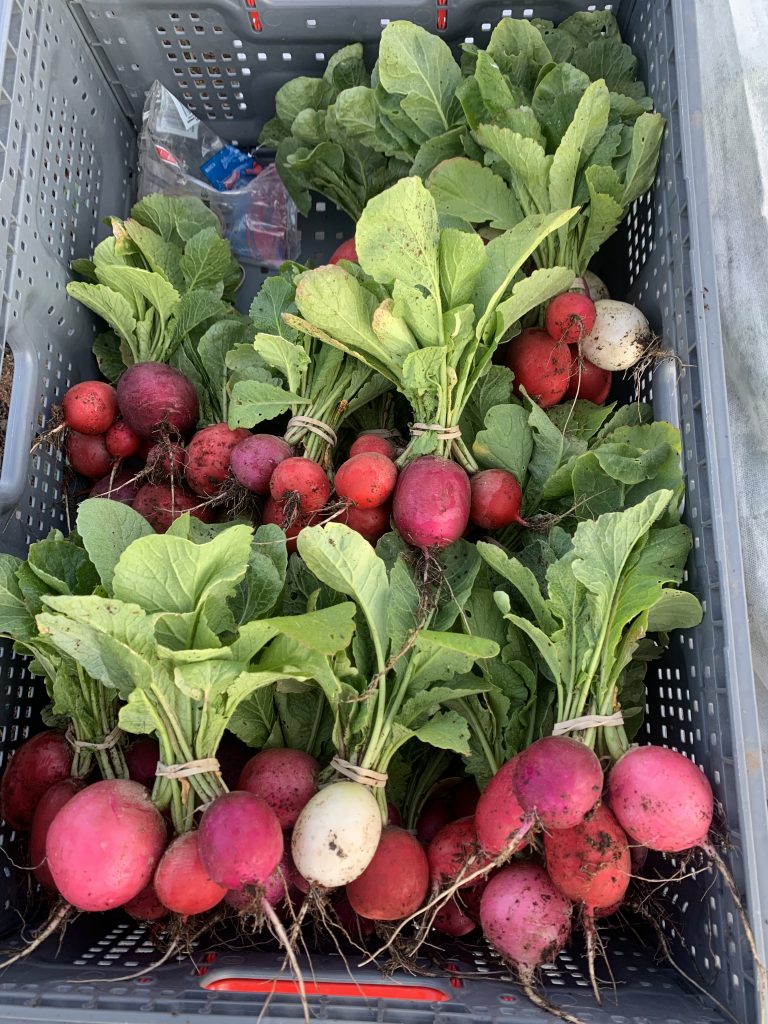
With the financial aspect taken care of, Williard turned to the nitty gritty prep work. “It all starts with spreadsheets and crop planning. I think a lot of people underestimate how much computer time is involved with farming, especially in the winter,” she says. Williard spent much of her 2020-21 winter gaming out the strategy for the upcoming season.
“Here’s the growing space, here’s how many beds we can build, here’s how many vegetable or crop successions we can get from each bed. You just have everything on a timeline,” says Williard. An additional factor with the farm was that the produce was going to be distributed to the community. “[So] you have to decide what’s going to be available every week, and in what quantities,” she adds.
When going about crop planning, Williard started with her desired end goal and worked backwards. “We knew we wanted to feed about 200 families every week for [about] 18 weeks. So, you start thinking about the quantities of each crop that you’ll need,” says Williard, who also considers what crops she wants to be available at specific times. From there, she starts plugging the crops into various beds, along with their estimated “days to maturity” projection, with an additional 15 to 20 days added to account for Gunnison’s climate and growing conditions.
Roughly 70 percent of Glacier Farm’s crops will get an early start in greenhouses (the other 30 percent is predominantly quicker-growing leafy greens and root crops), another variable to be considered in the broader planning picture. Considering all these factors, Williard and her team will derive a full crop schedule that informs them of when specific crops should be planted.

“[Then we are] trying to work into successions…We can get a quick, 35-day spinach [crop] out of this bed, and then two days later it needs to be completely turned over so that the beets will be ready. You’re trying to maximize a really short growing season, and you’re trying to maximize the space that you have. Most of our beds saw two to three successions of vegetables, but then we had a really warm fall, so realistically I could have put in a whole [different] succession on half those beds. But instead I decided to go to cover crop[s] because I wanted to help those beds regenerate a little bit,” says Williard.
Williard offers that crop planning is both an intricate art and a science that requires advanced, localized knowledge, as well as loads of uncertainty and doubt. “There’s so much more I need to know, and I know it will probably be an ongoing learning process for the rest of my life,” she says. During that first “offseason”, Williard also applied for funding to build a high tunnel (also known as a hoophouse) from the Natural Resource Conservation Service (NRCS), which she obtained.
From the start, pests proved to be a substantial challenge. “Every day we would show up and there would be a different pest on the crops, and so we’re pivoting and trying to deal with that,” says Williard, who notes that pests often pose difficult decisions. Mountain Roots’ policy is to tread lightly on the land, which can mean utilizing Dr. Bronner’s peppermint soap in combination with neem oil as a mitigation strategy.
Another strategy employed by many farms, including Glacier, is simply over-planting by 20 or 30 percent in anticipation of losing crops. In 2021, the farm saw aphids, caterpillars, deer, flea beetles, and various species of birds. “It was surprising how quickly they found this new farm. We’re surrounded by grasslands, so as soon as they found these new, very delicious crops– game over,” quips Williard. Pests are a natural hazard of farming operations, and Williard says that the name of the game is deciding if, when, and how to intervene with natural processes to protect what is ultimately the community’s harvest.
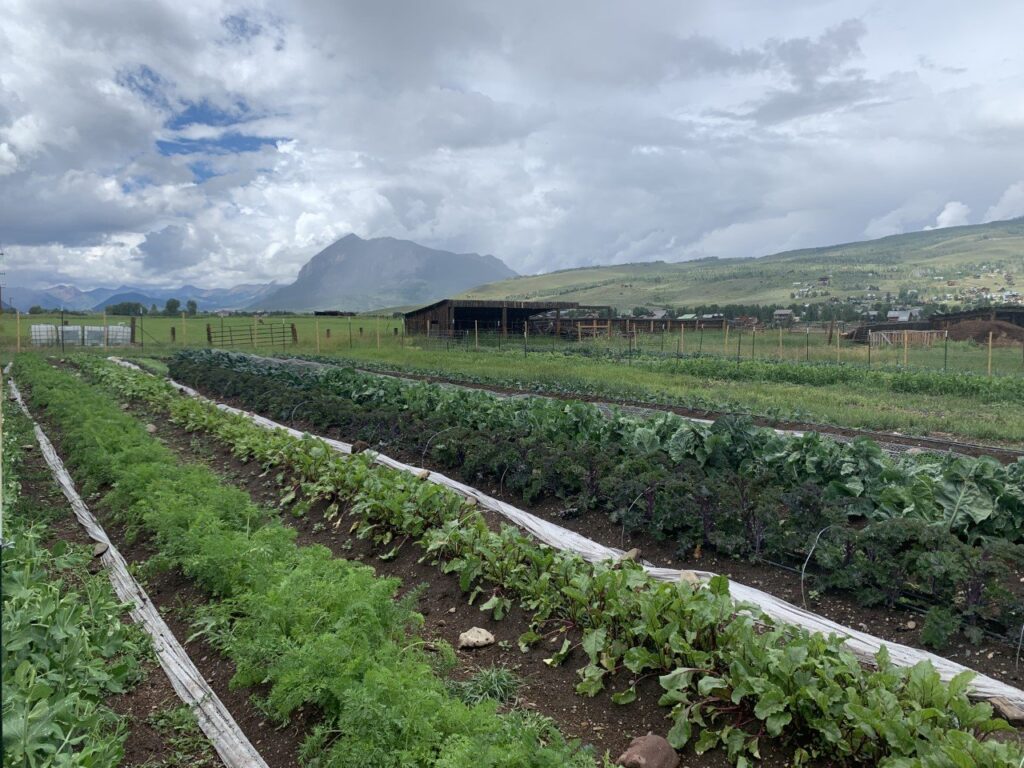
The 2021 season was blessed with substantial rains, which were welcomed but proved to be excessive at times. “[Because of] the way that the flood irrigation system in this valley works, we would show up at the farm and all the beds would be under [about] two feet of water. We had complete flooding of about half of our crops at one point,” recalls Williard. Other environmental challenges, like the high elevation, unpredictable hailstorms, and more predictable freezes, can also strain growing operations and the growers themselves.
Despite these natural obstacles, Williard and her crew turned in a bumper crop. “I basically targeted 2,000 lbs. of food this first year, and we ended up producing 3,000 lbs. of food,” she recalls. Glacier Farm partners with the community farm at Coldharbour Institute, with the two farms experiencing slight climatic differences due to the elevation difference. Together, they combined to produce over 11,000 lbs of food during the 2021 growing season.
The big project at the end of the growing season was constructing the 20’ x 72’ high tunnel (also known as a hoop house). Williard anticipates it will double the farm’s total production. The tunnel will serve to extend the growing season on both ends. Another goal for next season is to improve the amount of cover crop grown on the land to maximize soil health. “It’s a fine balance, because getting a cover crop in the ground in time for it to actually germinate also means that you’re shortening the season a little bit when you could be producing food,” Williard notes.
On the distribution end, Mountain Roots operates a multi-farmer Community-Supported Agriculture (CSA) system, managed by fellow MEM student Molly Mazel in her role as Local Food Distribution & Development Manager. The CSA acts as a regional food hub for consumers interested in obtaining local produce. The program pulls food from the Coldharbour Community Farm and from Glacier Farm, then purchases additional food as necessary from Iola Valley Farm, Gunnison Gardens, or other farms in the valley or across the broader region.

This practice allows for more diversity in what CSA box holders can receive, including fruits that are simply unable to grow in Gunnison. Earlier in the season, Gunnison receives vegetables and other foods from different valleys with earlier growing seasons. Later in the season, Gunnison doles out leafy greens to its neighboring partners. The CSA had 130 shareholders this year, with shareholders receiving boxes over the course of four months.
In addition to the multi-farmer CSA, Mountain Roots operates the Backyard Harvest program. The program is a completely free box distribution program with 80 shareholders that runs for 18 weeks. 60 percent of Glacier Farm’s produce went towards Backyard Harvest boxholders this year, again combining efforts with the Coldharbour Community Farm and local and regional producers. “If Sue Wyman [with Gunnison Gardens] has 130 massive stalks of celery, and she doesn’t know what to do with them, Mountain Roots is that contact [and] we can help distribute them,” adds Williard as an example of the benefits of interconnected producers.
In her years in the agricultural scene, Williard has seen and heard a lot of misinformation about farming and ranching, “Unfortunately I don’t feel like farming plays a central role in people’s lives…a lot of that’s just because of so many degrees of separation. [When you have] food coming from a thousand miles away it’s really hard to feel connected to that farmer, but as you start to [de]centralize and scale down that food system, you start to be like ‘oh, farming is essential to my daily existence,’” Williard postulates.
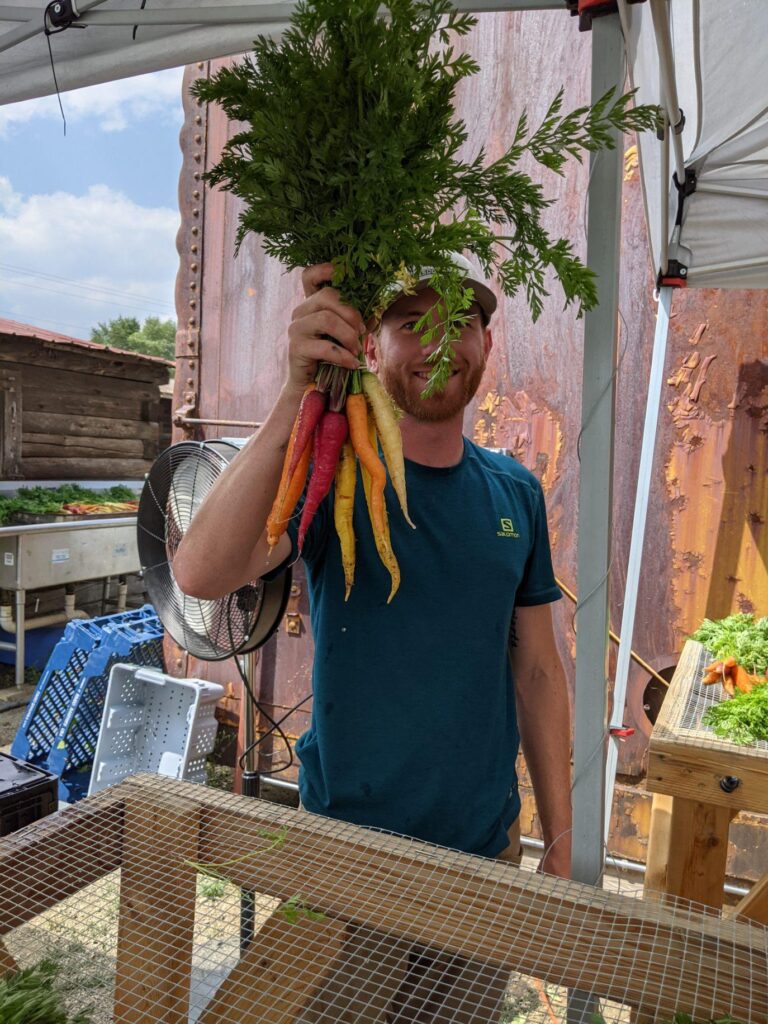
Over the years, Williard has heard a lot of misguided views about the hard work she and others are performing, such as: “it’s impossible to make a living farming these days,” “farming isn’t a viable career,” and “you don’t need a graduate degree to be a farmer,” Williard recalls. Yet she understands firsthand just how difficult it is to make a viable living farming and how much goes into a successful operation, especially in the present day when climate change, increased input and equipment costs, declining soil health, and water scarcity threaten to pull many farmers under water.
Williard wants the surrounding community to know about the realities of farming and ranching in a changing world, and about the importance of local food production. “It’s essential, especially in the time of climate change, [to have local] farmers who can adapt to the challenges of climate change and still produce food for a growing population,” says Williard.
“When it comes to farming in the Gunnison Valley, it’s not easy; that’s certainly true. People told me I wasn’t going to be able to grow broccoli or cauliflower at 9,000 feet, and we have cauliflower heads coming off the farm that were some of the biggest cauliflower I’ve ever seen,” she says, adding that “a little extra effort” is required.
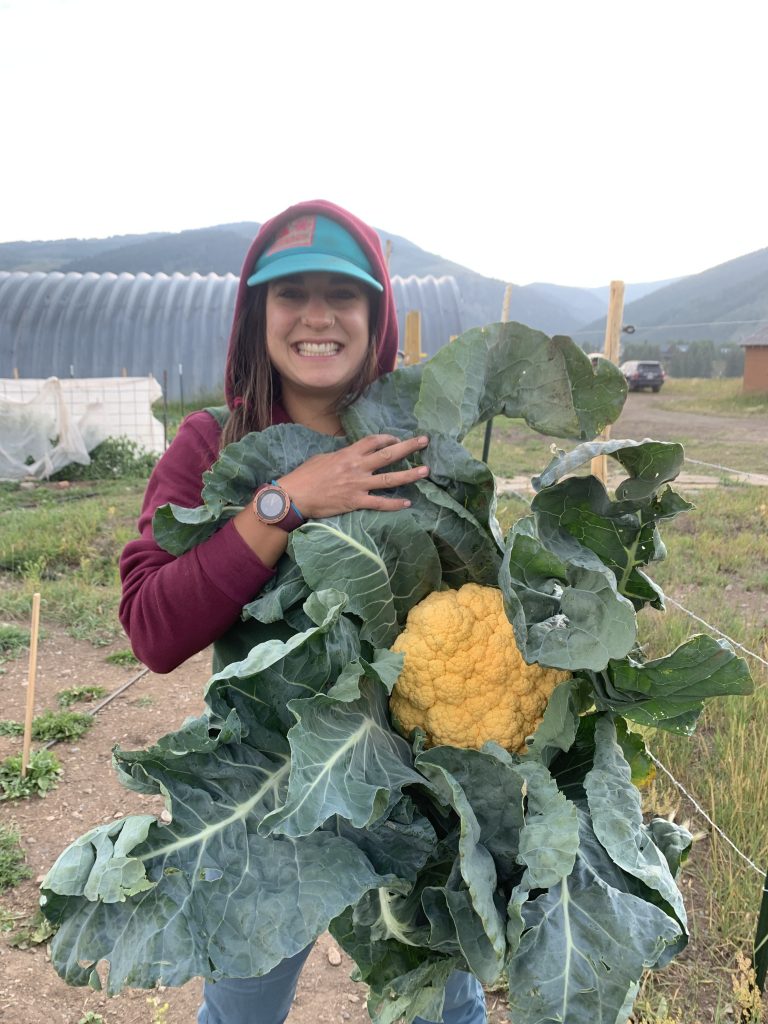
Glacier Farms managed to grow more than a dozen crops this year and beat their total poundage projections by 50 percent. “I think it’s really important to see food grown in a remote, mountain valley such as Gunnison, because it just models what is possible; if we can do it here people can do it anywhere,” says Williard.
The educational and persuasive component of these local nonprofits and producers is an indispensable facet for Williard. “If we can start to scale [down] our food system to be a little bit smaller, and a little bit more connected from farmer to plate, then people might have a different valuation of what farming is, because they’ll know their farmers, and they’ll also know where their food is coming from, and they’ll understand how to eat in a more seasonal way,” she says.
Recently, Williard has taken a step back from the day-to-day farm management operations with Mountain Roots, and is now working collaboratively with both the Crested Butte Land Trust and Mountain Roots to craft a five-year plan for Glacier Farm, that includes using the farm as an education model for the community.
Moving forward, Williard will look to merge and combine her many passions, including farming, skiing, mountain biking, outdoor guiding, writing, editing, and education, just to rattle off a few. Williard recently started her own farm with her partner: Sunny Sage Farm. Right now, the pair are raising chickens and working to build out their repertoire of row crops.
With so many passions competing for her attention, Williard will have little trouble keeping busy.
